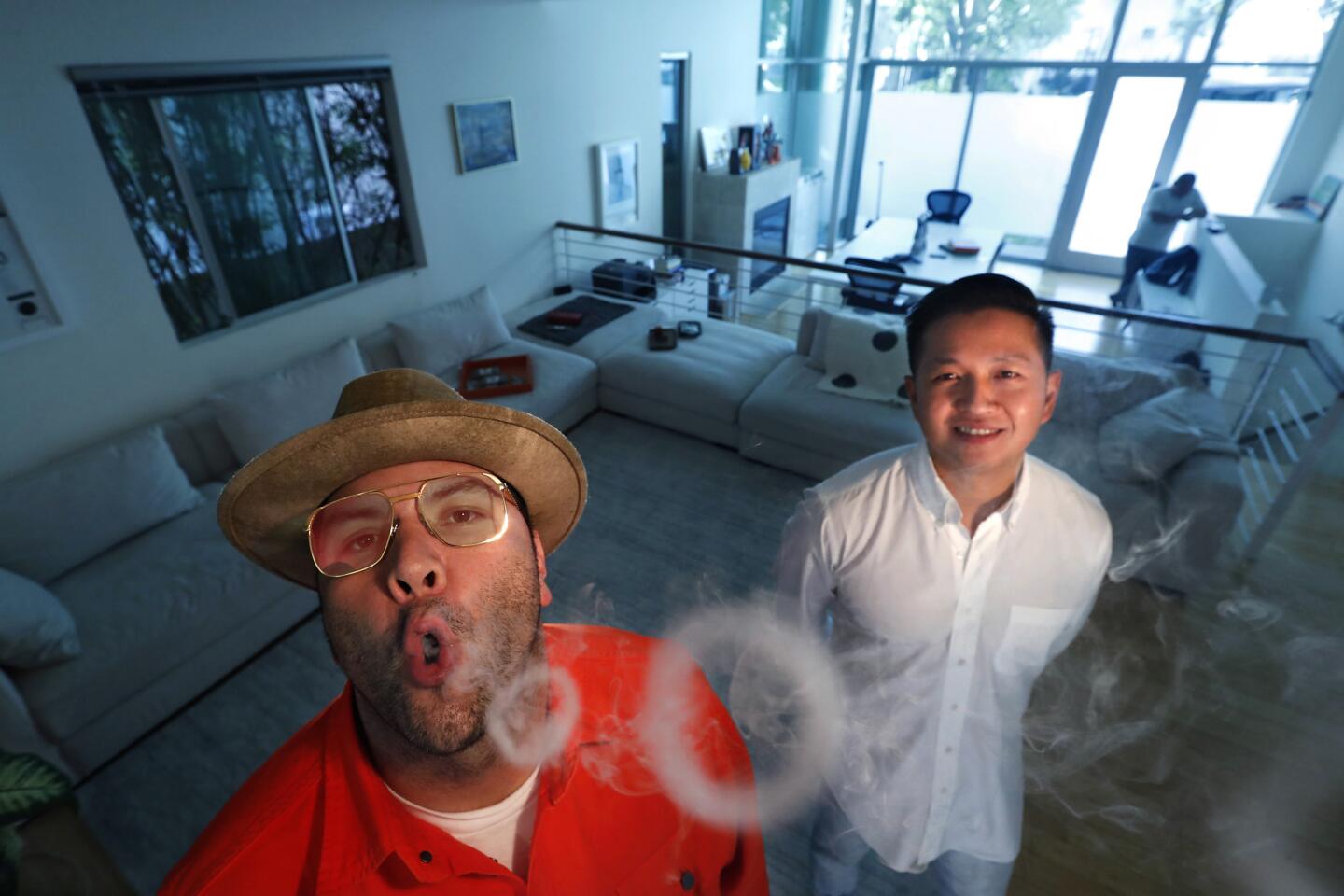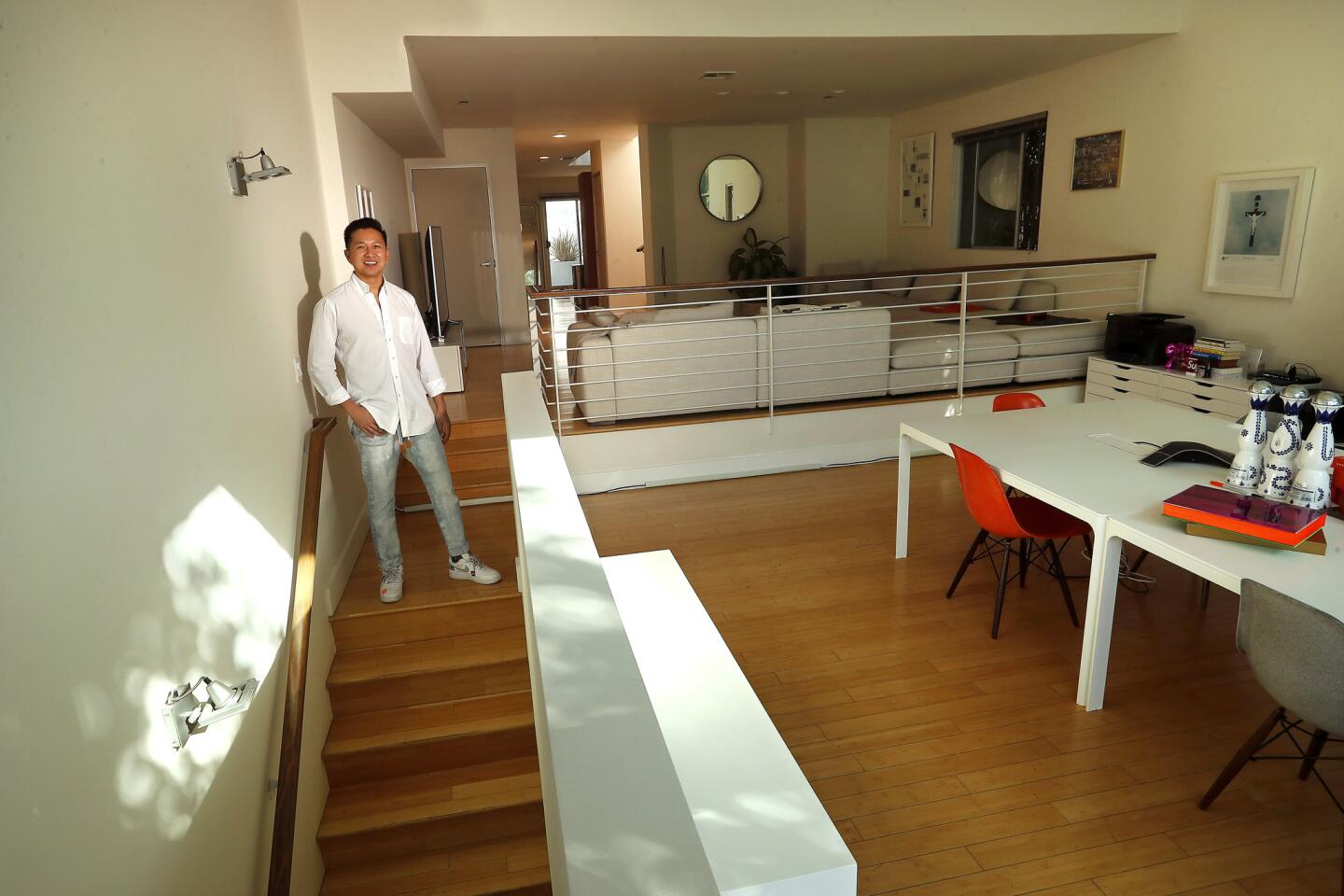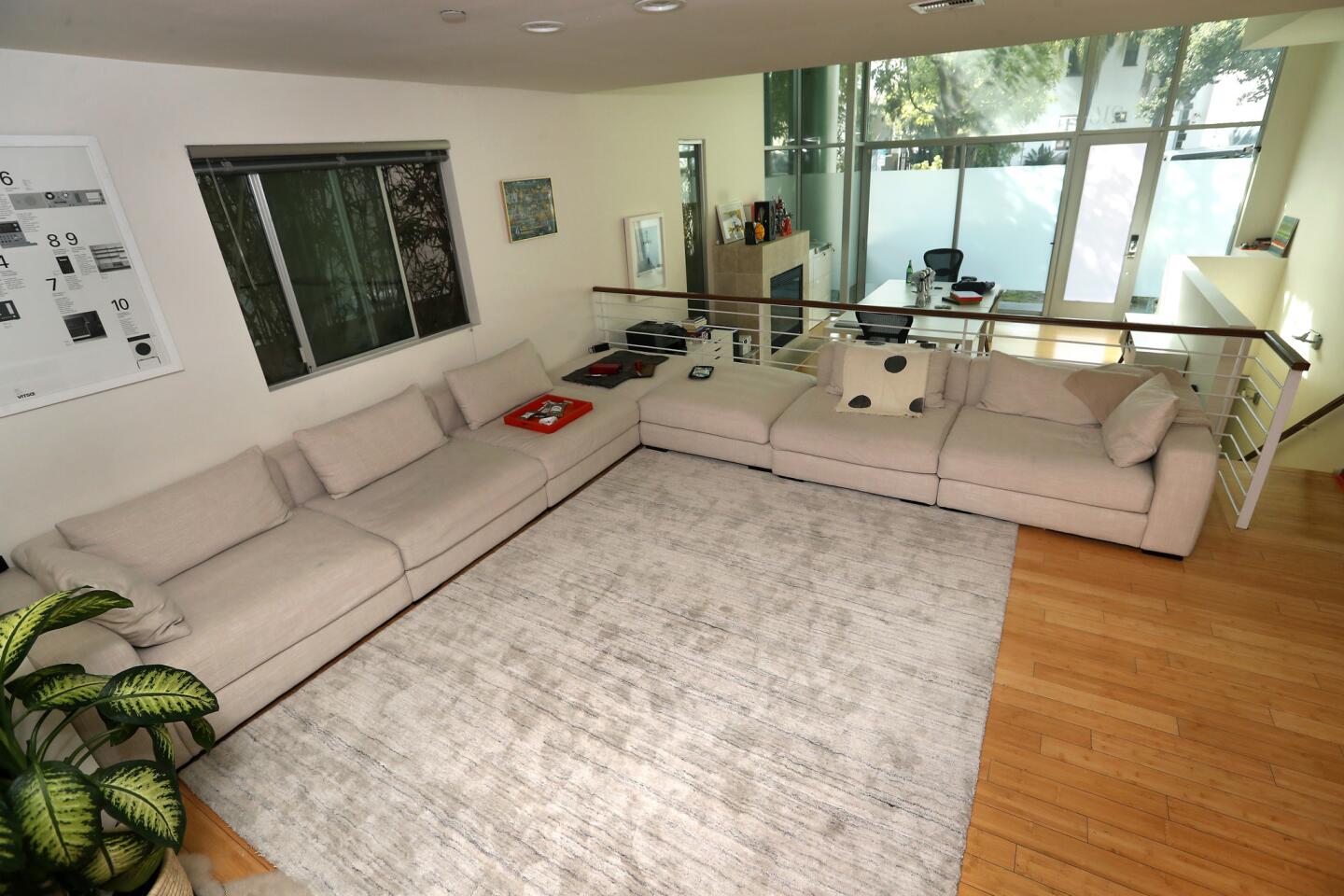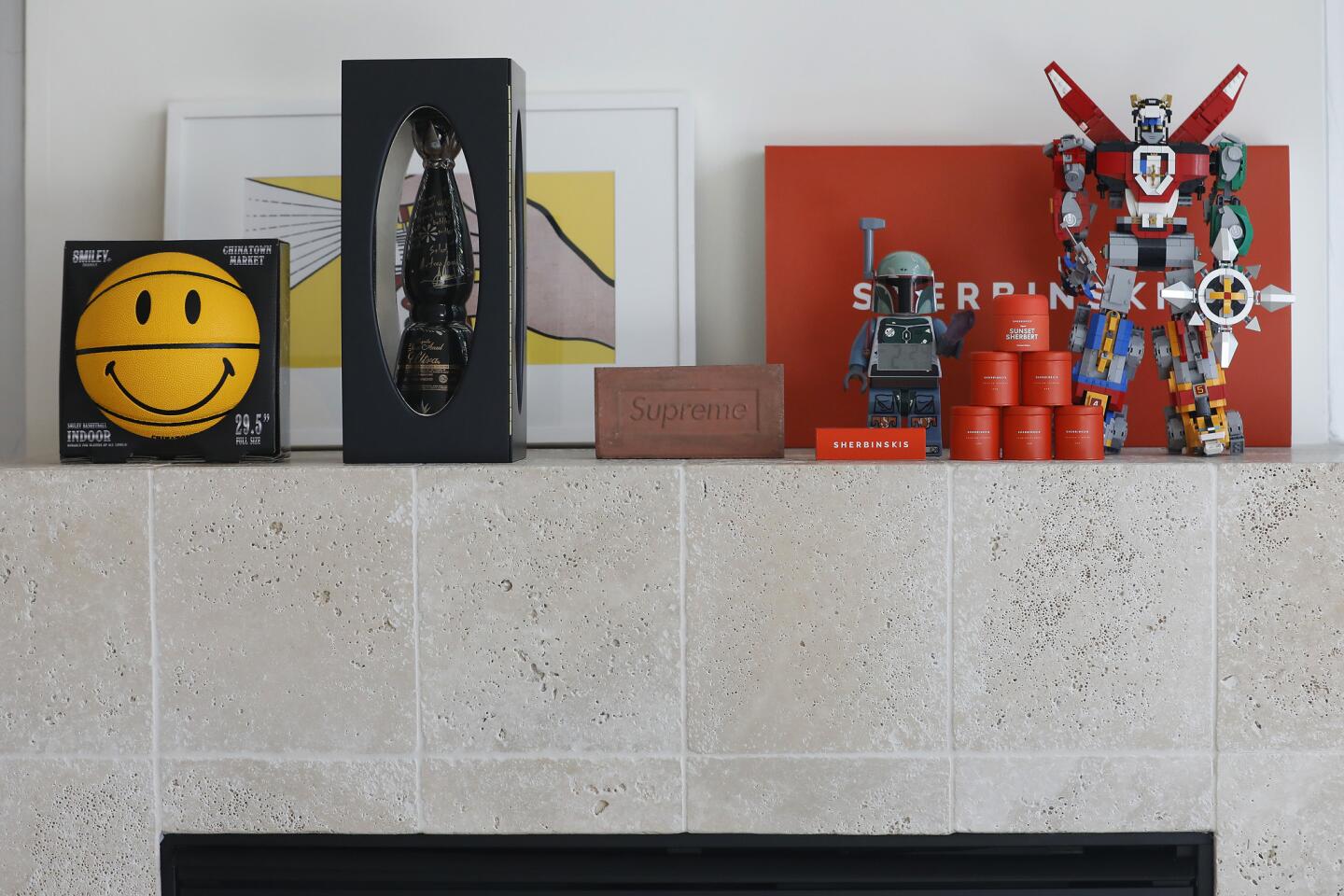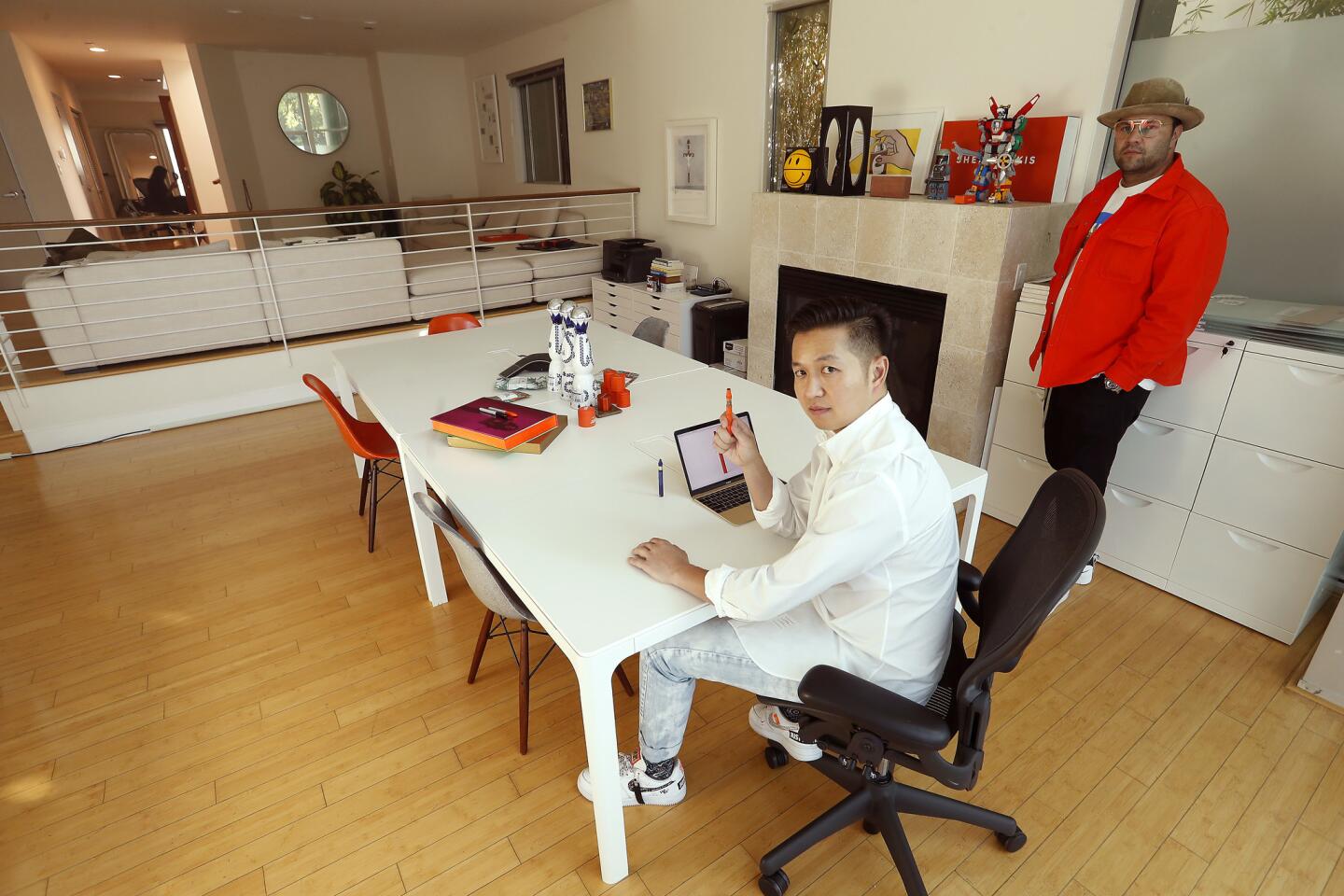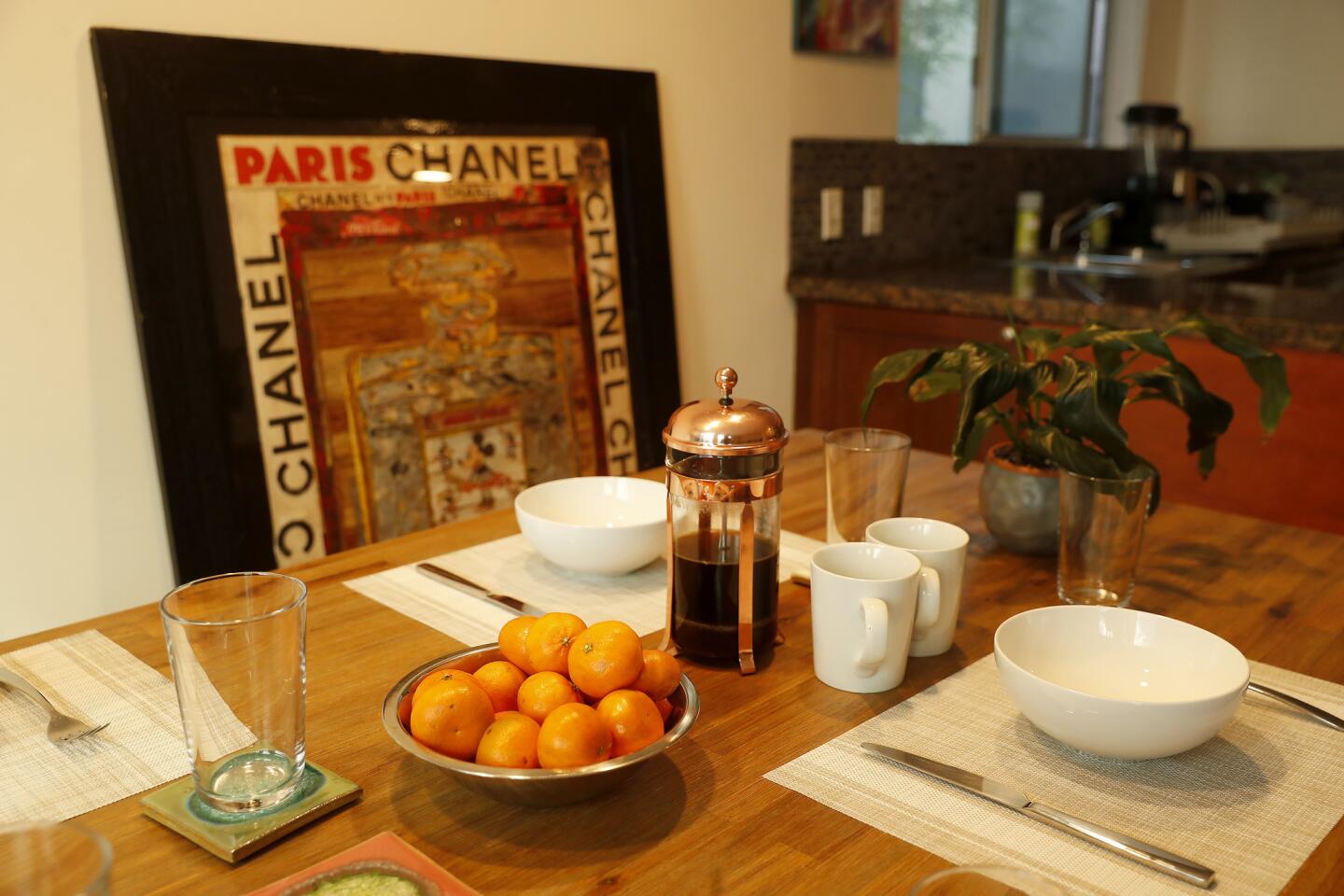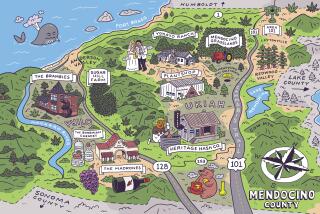This is what a cannabis executive’s party pad looks like
Don’t expect to find bongs, water pipes and empty packets of Funyuns at the Los Angeles-area home of Will Htun.
When we asked to look inside the home of the CEO of cannabis brand Sherbinskis, we found a sleek and minimal space where he could host chef-catered, cannabis-paired dinners on the rooftop and take meetings in a high-ceilinged front room.
Htun, 34, moved into the 2,700-square-foot townhouse in July 2016, after he and brand founder Mario Sherbinski, who is based in San Francisco, decided it would make an ideal live/work space. With its three en-suite bedrooms, Htun opens up the home to associates in town for business instead of housing them in a serviced apartment.
“Our work influences a lot of how we live here,” said Htun, who was born in Myanmar and has lived in Africa and Hong Kong. “We’re so focused on work that we wanted [to wake up], drop into our front room and sit at a giant conference table and get on with it.”
In that front room, floor-to-ceiling glass windows open out fully onto a small yard. The exterior of the building is steel and glass; Htun said he didn’t have to do anything major to the interior, which came with white walls and bamboo floors.
“We’re generally more understated … I feel like we’re still in startup phase even though we’re four years into the business. We could be in a big Hollywood Hills house and chalk it up to a marketing budget, but this was more our style,” he said.
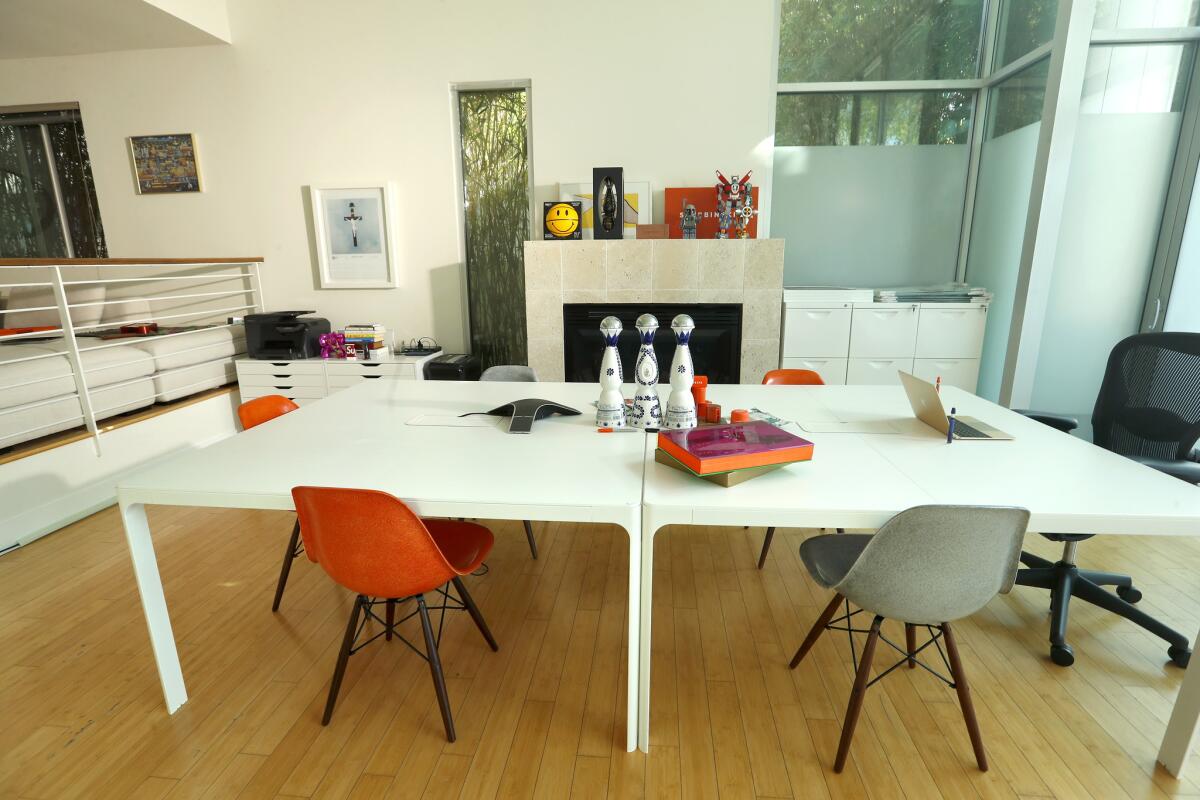
Displayed in the front office space are pieces that tap into Htun’s other interests: a collectible Lego robot and a Jabba the Hutt figurine bought from Colette in Paris before it closed, and a signed bottle of tequila from Clase Azul of its priciest variety; only 500 bottles were made, valued at $3,000 each.
Behind the office is what Htun describes as the heart of the home, a place where he likes to “lounge and reset. I travel a lot, but I love this area on the weekends,” he said. A stream of DJs and artists — including rappers Rich the Kid — drop in after a recording session nearby. A friend of Htun’s owns Capsule, a Los Angeles design studio, and custom-made a cream-colored sectional couch for him, which sits atop a rug from West Elm and is decorated with a sheepskin throw from Room & Board.
One of the few obvious signs of the business: Bright orange trays — the color echoes Sherbinskis packaging — were custom-made, and hold cannabis paraphernalia like buds, rolling papers and vape pens. A set of orange chairs from Modernica is moved around where they are needed. Against one wall is a slab of a walnut table, with stainless steel accents, which is one of the few pieces of furniture Htun brought back with him from Hong Kong.
Given his work and travel schedule, Htun enjoys gathering people on the rooftop over multicourse dinners, where strains of cannabis are paired as a wine might be. (The space is furnished by pieces from fernish.co, a Los Angeles-based company that rents out pieces on a monthly subscription model. There’s a pair of teak chaises in one corner and in the center a teak dining table with polished steel chairs.)
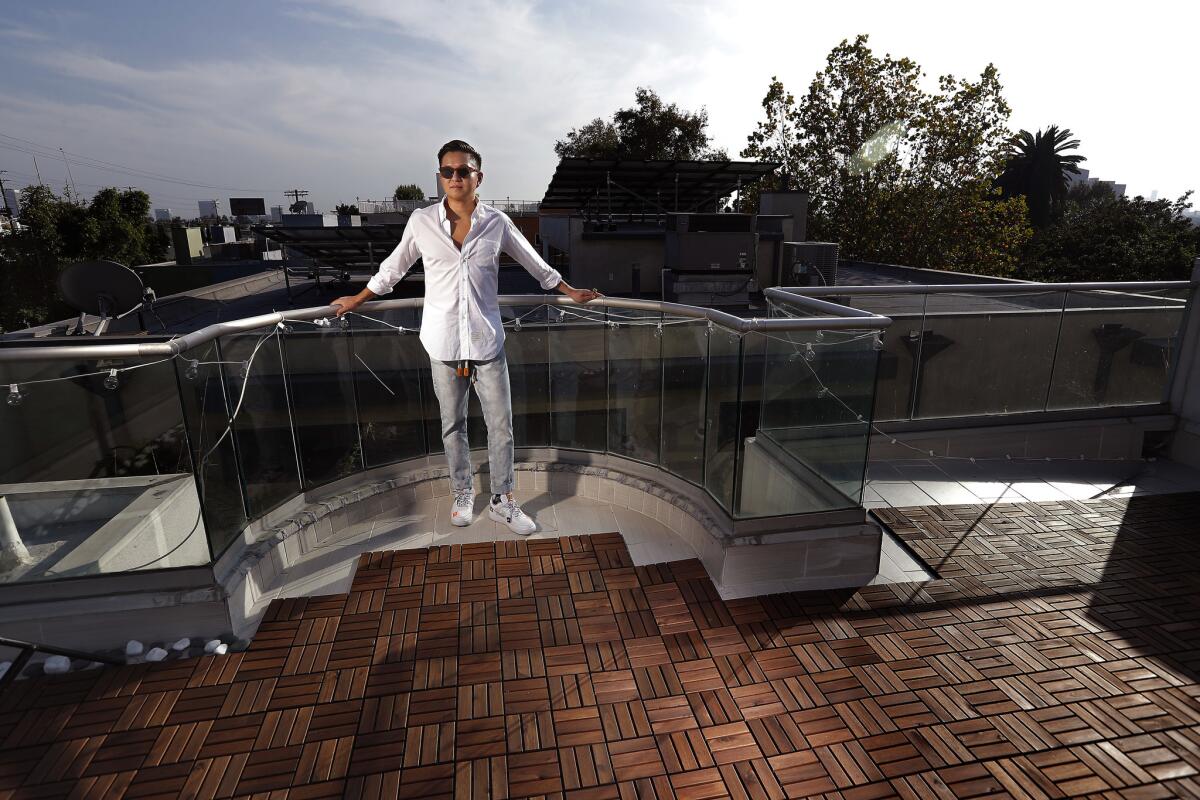
Sherbinski, who hangs his hat at the Htun pad when he’s in Los Angeles, said these late-night gatherings for as many as 18 people are a way to enjoy good food and a smoke together, as they might do in Amsterdam.
“Cannabis and food go hand in hand,” said Sherbinski. “Here, we sit around and talk about cannabis and culture, and people can have a drink, smoke a little and then crash here afterwards. It’s the best kind of evening.”
